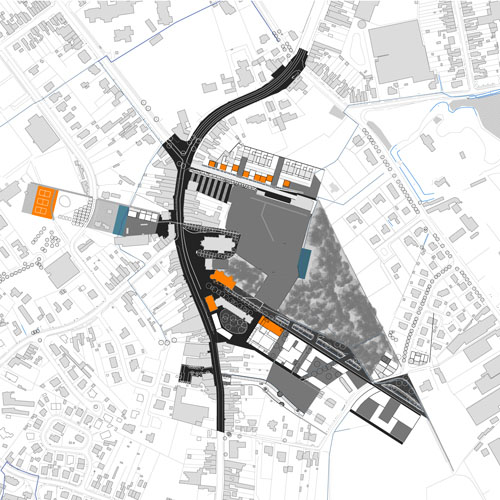The hypothesis of a new central place asks for the introduction not only of new programs, but also of new types of spaces.
If the impression of a vague space is less evident when one gets closer and tries to understand the construction of the site, but not easier to deal with, still the vast surface needs to be clarified.
These new spaces we will call "avenues" taking this term not from the urban setting where it is currently used and not only from the French park vocabulary, but from the territorial "avenues" that since at least the XVI century are used to structure the territorial scale and are coexisting with the smaller scale of the villages. The avenue is a spatial device, a linear organisation of path, trees, with specific levels slightly different from the uneven ground, connecting two objects, two sides, the top and the down of a hill,...
The three avenues we propose are an extension of the traditional urban and social space of the North-South road (a sort of graben) and connect the different part of the new centre.
Trajectories from A to B, but also places where to stay, the avenues introduce a lofty scale in Merelbeke centre, that is not totally new for its territory.
Today they can be reinterpreted as contemporary elements inserted and crossing a humid area solving the draining problem, connecting the stepping stones and the different public programs on the two sides of the national road.
|

![]()